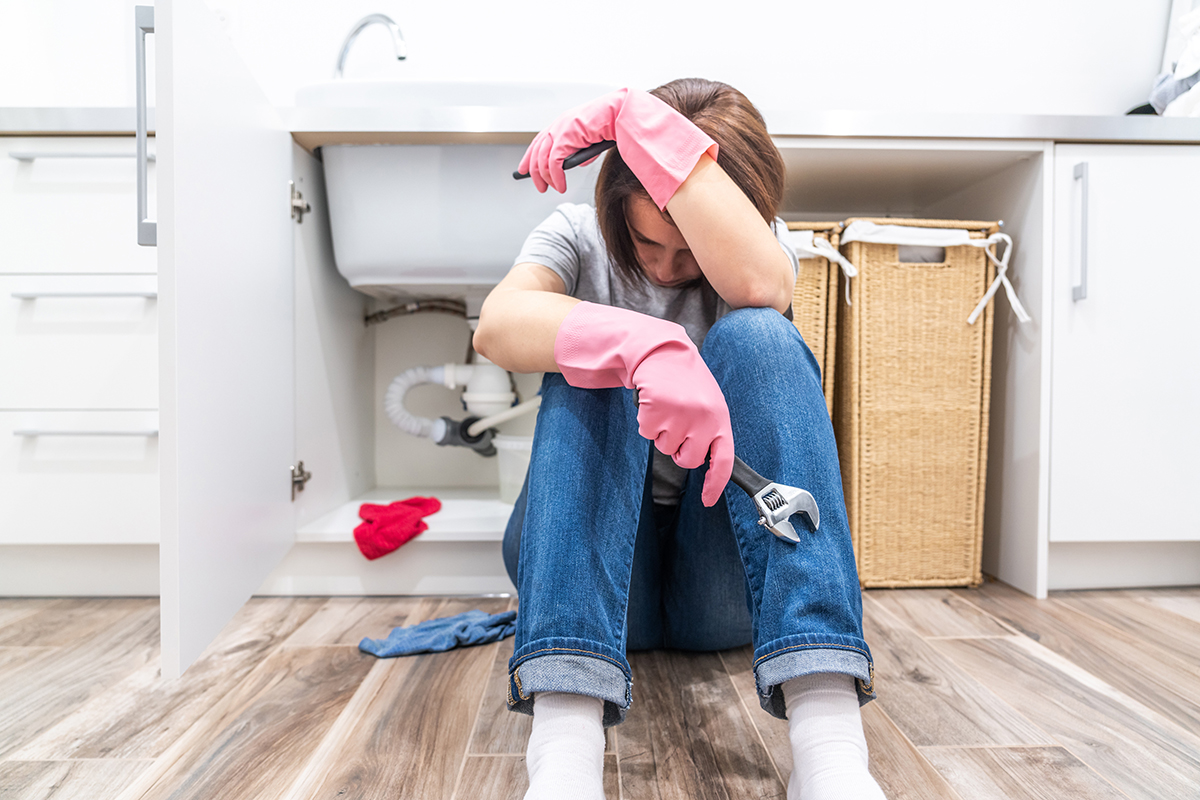Best Tips for Fixing a Leaking Waste Disposal Unit
Best Tips for Fixing a Leaking Waste Disposal Unit
Blog Article
Everyone has got their personal piece of advice in relation to Why Is My Garbage Disposal Leaking From the Bottom?.

Garbage disposals are important kitchen home appliances that aid in disposing of food waste efficiently. Nonetheless, a leaking waste disposal unit can be a frustrating and messy trouble to take care of. The good news is, many leakages can be dealt with conveniently with a few basic actions. In this write-up, we will certainly discuss exactly how to repair a dripping waste disposal unit efficiently.
Intro
Waste disposal unit are set up under kitchen sinks and are made to shred food waste right into smaller pieces, allowing it to travel through the pipes system easily. While these gadgets are usually dependable, leaks can occur with time because of wear and tear, loosened links, or damages to the device.
Usual Reasons For Leaks in Trash Disposals
Worn Seals and Gaskets
Seals and gaskets play a critical function in stopping water from dripping out of the waste disposal unit. Over time, these elements can wear away, leading to leakages around the disposal unit.
Loose Links
The links between the garbage disposal and the pipes system can become loose gradually, creating water to leakage out during operation.
Cracks or Openings in the Disposal System
Physical damages to the waste disposal unit, such as fractures or holes in the real estate, can also cause leakages.
Identifying the Source of the Leak
Before trying to deal with a leaking waste disposal unit, it is essential to recognize the resource of the leak. This can normally be done via aesthetic examination or by conducting easy tests.
Visual Inspection
Check the garbage disposal unit thoroughly for any indications of water leak. Pay close attention to locations around seals, gaskets, and connection points.
Examining for Leaks
One way to examine for leaks is by running water through the disposal device and looking for any kind of visible signs of leak.
Tools and Materials Needed for Dealing With a Leaking Waste Disposal Unit
Prior to starting the fixing process, gather the needed tools and materials, consisting of a screwdriver, adjustable wrench, plumbing's putty, replacement seals or gaskets, and epoxy or patching product for fixing fractures or holes.
Step-by-Step Overview to Repairing a Leaking Waste Disposal Unit
Turn Off the Power
Before trying any type of repair work, guarantee that the power to the garbage disposal device is turned off to avoid the risk of electrical shock.
Locate the Leak
Recognize the exact place of the leak and identify the reason.
Tighten up Connections
Utilize a wrench to tighten up any kind of loose links in between the disposal system and the pipes system.
Replace Seals or Gaskets
If the leak is because of worn seals or gaskets, eliminate the old parts and replace them with brand-new ones.
Patching Fractures or Holes
For cracks or openings in the disposal unit, usage epoxy or an appropriate patching product to seal the broken location.
Evaluating the Waste Disposal Unit After Repair Service
As soon as the fixing is total, check the garbage disposal by running water with it to guarantee that the leak has actually been settled.
Preventive Maintenance Tips to Avoid Future Leakages
To stop future leaks, it is vital to perform normal upkeep on your garbage disposal. This consists of keeping it clean, preventing placing non-food items or tough objects down the disposal, and occasionally looking for leakages or various other problems.
Verdict
Finally, dealing with a leaking garbage disposal is a relatively straightforward procedure that can be completed with standard tools and products. By adhering to the steps outlined in this article and practicing preventative upkeep, you can maintain your garbage disposal in good working condition and stay clear of costly fixings in the future.
What to Do About a Leaking Garbage Disposal
A leaking garbage disposal often goes unnoticed until you confront a sopping cabinet, a foul-smelling puddle, or an audible drip-drip-drip from the unit. The fix can be frustrating, too, because the leak can stem from a number of components in the system. Fortunately, with a little sleuthing, you can zero in on the leak and—depending on the exact location—stop the icky oozing and repair the component that caused it. Worst case scenario, if it turns out that the garbage disposal must be replaced, installing a new one is a reasonable do-it-yourself task for those with basic plumbing skills. Read on to keep the cash you’d otherwise hand over to a pro.
Prepare to find the leak
Prior to testing the garbage disposal for leaks, unplug it at the wall outlet and turn off the power from the breaker box to prevent electrical shock. Then insert a watertight sink stopper into your sink drain and wipe the unit dry with a clean cloth. In any handy container, mix a few drops of food coloring into a few cups of water, and pour the dyed water onto the sink stopper to help you locate the leak.
Investigate the source
the top, where the disposal meets the sink drain the side, where the dishwasher hose or main drain pipe connects to the disposal or the bottom of the unit Inspect each of these locations while gliding a light-colored rag over the unit; the dyed water will readily show on the rag and reveal the location of the leak. If a leak isn’t immediately apparent, remove the sink stopper and pour a few more cups of dyed water down the sink drain, then check for leaks again. Leaks near the top of the unit are more likely to show themselves while the sink is plugged, while side and bottom leaks are more noticeable while the sink is unplugged.
The metal sink flange that sits directly inside the sink drain is typically sealed around the top with plumber’s putty (a clay-like sealant) and then secured from under the sink with bolts. If the plumber’s putty deteriorates, or the bolts loosen, the flange can no longer form a watertight seal between the sink drain and the disposal—which could cause a leak at the top of the unit.
To reseal the leaky flange, you must first detach the garbage disposal. Start by loosening the screws securing the main drain pipe to the disposal, then loosen the screws in the metal clamp securing the dishwasher hose to the disposal and detach the drain pipe and dishwasher hose from the disposal. Loosen the screws in the mounting ring that connects the disposal to the metal mounting assembly beneath the sink, then pull down the disposal and carefully set it on a clean, dry surface. Loosen the bolts in the mounting assembly with a wrench, then pull down the mounting assembly and set it near the disposal.

I came across that blog entry about The Handy Guide To Fixing Your Garbage Disposal Leaking while perusing the search engines. Enjoyed our write-up? Please share it. Let somebody else find it. Thank you so much for taking the time to read it.
Information Here Report this page